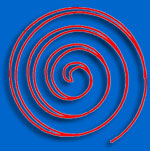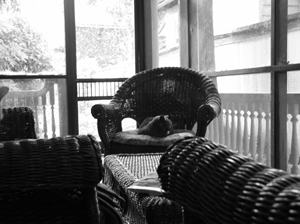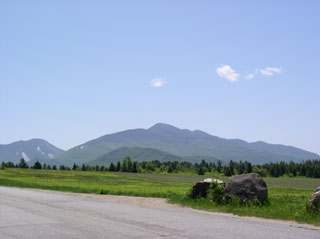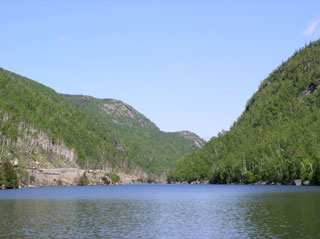
Quantum Measurement
Measurement
- Physics vs. Natural Philosophy
- Process of Quantification
- Perfection of Instrument
- Summary
- Questions
Statistics & Uncertainty Estimations
Heisenberg's Uncertainty Principle
Relativity Theory & Causality
Spin, Polarization, and Mixed States
Bell's Inequality
Measurement
Physics versus Natural Philosophy
 Most
likely, measurements were first performed for the purpose of commerce.
Ancient records indicate that length, weight, and time measurements were
performed for practical purposes such as construction of roads and
buildings, agriculture, etc. Clearly, for application of knowledge
measurements were practiced very early on, but how about for the
creation of the science? Early investigations on physical phenomena,
dating as far back as 1000 AD, made use of measurement and
quantification to support scientific hypothesis. However, for the most
part, study of science continued to included a great deal of qualitative
discussions based on "observations". (One of these discussions that is
often quoted in today's introductory physics texts is Galileo's "proof"
that all objects must fall with equal rates, independent of how much
they weigh.) Up until around mid 19th century most studies in physics
were still very descriptive and in they mostly used logic and deduction
only qualitatively, very similar to philosophical arguments. These
descriptive studies, which included topics from fields that we now call
physics, chemistry, geology, and biology were termed to belong in
Natural Philosophy. For example, in his book "Sound" published in late
1900s John Tyndall, Professor of Natural Philosophy in the Royal
Institute of Great Britain does not use a single mathematical equation.
(What is especially interesting about this book is that it was written
for the purpose of educating the general reader, but it was also meant
as a forum to respond to the author's critics and describe his new
theories and discoveries!)
Most
likely, measurements were first performed for the purpose of commerce.
Ancient records indicate that length, weight, and time measurements were
performed for practical purposes such as construction of roads and
buildings, agriculture, etc. Clearly, for application of knowledge
measurements were practiced very early on, but how about for the
creation of the science? Early investigations on physical phenomena,
dating as far back as 1000 AD, made use of measurement and
quantification to support scientific hypothesis. However, for the most
part, study of science continued to included a great deal of qualitative
discussions based on "observations". (One of these discussions that is
often quoted in today's introductory physics texts is Galileo's "proof"
that all objects must fall with equal rates, independent of how much
they weigh.) Up until around mid 19th century most studies in physics
were still very descriptive and in they mostly used logic and deduction
only qualitatively, very similar to philosophical arguments. These
descriptive studies, which included topics from fields that we now call
physics, chemistry, geology, and biology were termed to belong in
Natural Philosophy. For example, in his book "Sound" published in late
1900s John Tyndall, Professor of Natural Philosophy in the Royal
Institute of Great Britain does not use a single mathematical equation.
(What is especially interesting about this book is that it was written
for the purpose of educating the general reader, but it was also meant
as a forum to respond to the author's critics and describe his new
theories and discoveries!)
Later in the 19th century the use of mathematical relations in formulating physical theories became very common. In this way, the study of physics became more and more quantitative and its theoretical formulation became more mathematical. (See a page from Einstein's publication.) By the beginning of the twentieth-century partly because of the mathematical complexities of theoretical physics and partly because of the instrumental complexities of experimental physics few scientists could fill both of these shoes. This resulted in creation of two separate "branches of physics": Experimental and Theoretical. The primary task of the experimentalists is to perform experiments and make measurements and quantifications. The theorists use these results and try to infer relationships among the measured quantities. They also try to determine the consequences of these inferences by predicting results of yet to be performed experiments. (A somewhat of an aside to our present discussion, this distinction between theory and experiment has, within the past century, been used and miss-used for political reasons! See the notes on Max Born's famous lecture!)
 With the advent of faster and faster computers theoretical studies in
physics have managed to become increasingly more quantitative.
Electronic computations have made it possible for scientists to study
problems that are too difficult to formulate analytically by using
direct numerical analysis instead. Numerical simulations have aided both
theory and experiments and in some cases have replaced the need for
direct measurements altogether. This has also created a new "type":
computational physicist, who is often a mix of a theorist and an
experimentalist. Because of these trends, today's physics heavily relies
on the process of quantification as a means to make sense of the
physical world.
With the advent of faster and faster computers theoretical studies in
physics have managed to become increasingly more quantitative.
Electronic computations have made it possible for scientists to study
problems that are too difficult to formulate analytically by using
direct numerical analysis instead. Numerical simulations have aided both
theory and experiments and in some cases have replaced the need for
direct measurements altogether. This has also created a new "type":
computational physicist, who is often a mix of a theorist and an
experimentalist. Because of these trends, today's physics heavily relies
on the process of quantification as a means to make sense of the
physical world.
Process of Quantification - Variables
Of course, in order to make a measurement we first need to specify what is that we want to measure. The quantity that we want to measure must not only be measurable, but its value must also be re-measurable. Without this "repeatability" of the measurement our results would go against one of the most important requirements of scientific method: "empirical replication". (For a good description of scientific method see the site at University of Rochester.)
Another important aspect of measurement is the process and the tools of the measurement. Once we have decided what is that we want to measure we need to specify a means of making the measurement. The aim of the process of the measurement has to include a sound means for the measurement. It must also result in production of a reliable outcome. This is what we call experimental procedure. We expect that once the same procedure is followed by others the same outcome is reached. We also expect that different, yet sound, procedures produce the same results too. Among different procedures the one that gives us smallest systematic error is considered superior.
 Often, these criteria are met during an investigation process in the
laboratory. We are "playing around" and, mostly by accident, we discover
that certain procedure produces a certain result. Further investigations
verify these results, so we become convinced that our (discovered)
procedure is a sound one. There are other times when we sit at a desk
and conjure up a clever scheme for making a measurement. At any rate, a
sound procedure is a major requirement for scientific quantification,
independent of how it is arrived at.
Often, these criteria are met during an investigation process in the
laboratory. We are "playing around" and, mostly by accident, we discover
that certain procedure produces a certain result. Further investigations
verify these results, so we become convinced that our (discovered)
procedure is a sound one. There are other times when we sit at a desk
and conjure up a clever scheme for making a measurement. At any rate, a
sound procedure is a major requirement for scientific quantification,
independent of how it is arrived at.
Perfection of Instrument
In order to quantify an observation we also need to come up with (build, beg, or borrow) an instrument for our measurement. The importance of the instrument is not just in its ability to make the measurement, but also for the precision of the results it could render. A superior instrument is one that measures with a high degree of precision. In fact, at times, the availability of good experimental apparatus allows for success and discovery, while its absence may result in "failure". So, a major task of the experimentalists is to perfect their tools of measurement. In the field of observational astronomy, for example, the availability of the Hubble Space Telescope has, literally, created a new universe just in the last few years. Similarly, the recent study of nano-sciences begun with the invention of a new "microscope", the Scanning Electron Microscope.
Summary
In summary, the reliance of physics on quantification is the primary factor for its separation from natural philosophy. One could go so far as to state that if "it" is not quantifiable, it is not physics! This strong restriction forces us to closely examine the requirements for a sound quantification. One of these requirements is that when we employ different procedures, the value of variables which we measure should produce closely agreeing results . Another is that in order to obtain results with higher and higher precision we have to employ more clever procedures and better instruments for our measurements.
Next, we need to discuss variations in the value of our results due to "errors" in the measurement. How could we reduce, or better yet eliminate, all errors? Could we continue to improve on the precision of our measurement so long as we work harder and harder in the lab?
